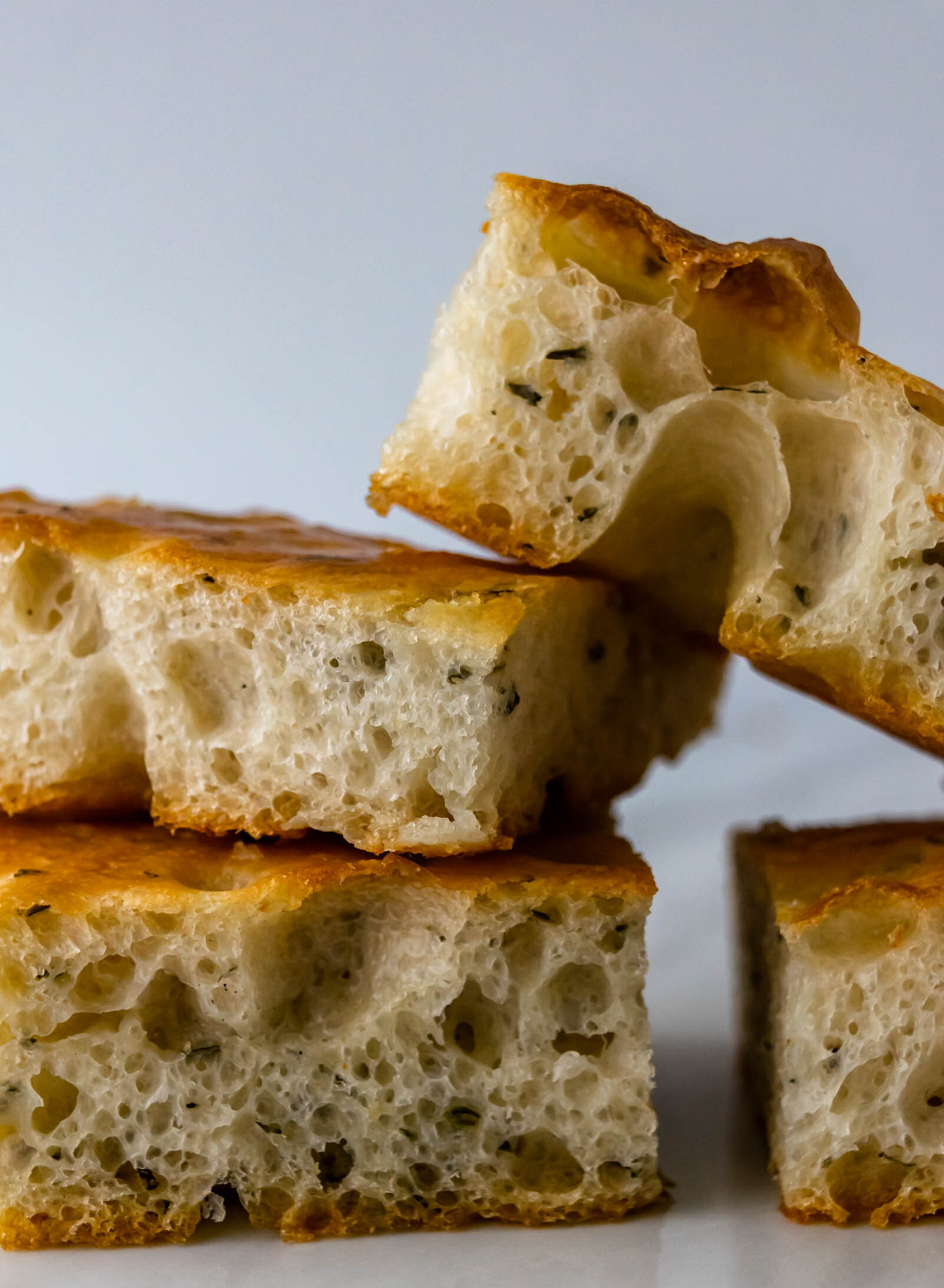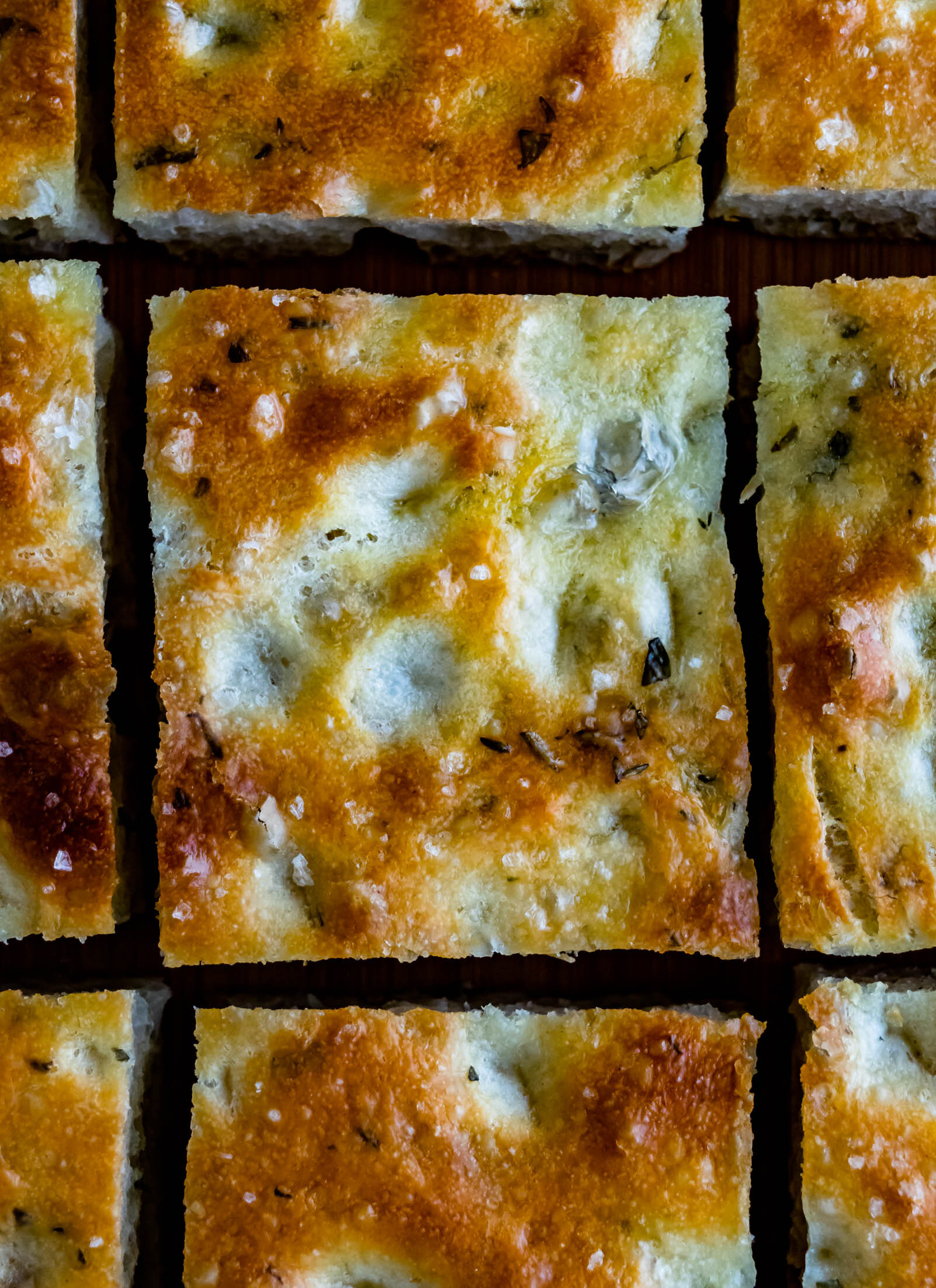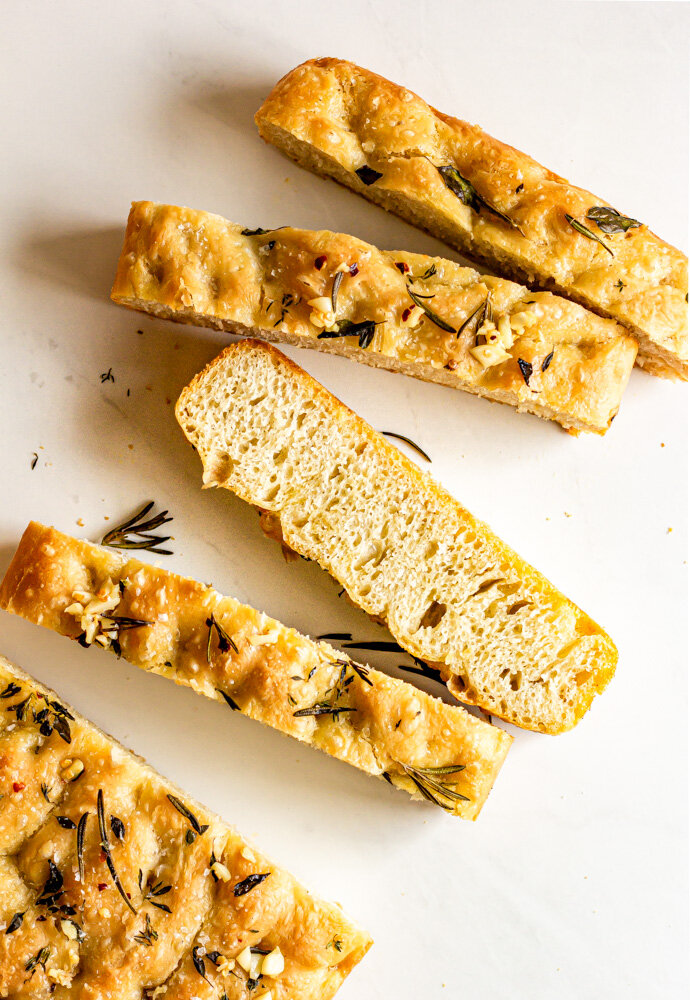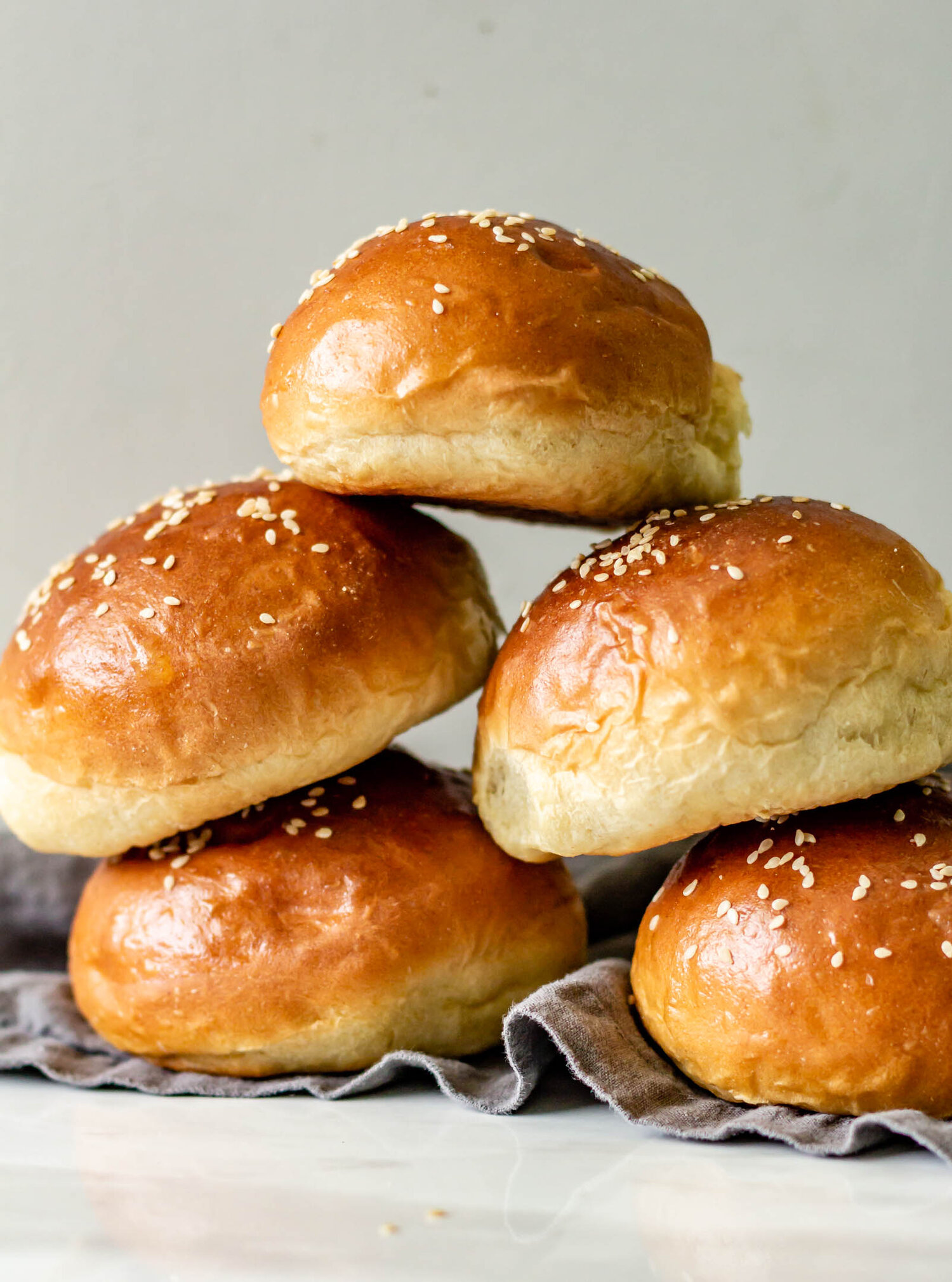Thoughts about Blogging and Samin Nosrat's Ligurian Focaccia
/Samin Nosrat's Ligurian focaccia recipe from Salt, Fat, Acid, Heat with a smattering of fresh herbs and some instructions for incorporating your sourdough starter into a focaccia recipe.
There are many days (far too many if I’m being completely honest) where I feel silly. Silly for quitting a full-time career —a career that is looked admirably upon by our society, one that comes with benefits and a consistent salary—to become a food blogger. Silly that I spent a year and a half in culinary school and interned in a high-end restaurant to spend my days developing recipes at home. There are so many days when I think to myself, I just need to go get a real job, mostly because I care a lot about what everyone else thinks about me.
Being a teacher has value in our society. I was doing important work. It didn’t matter that I was so drained emotionally, mentally, and physically that I fell asleep on the couch before 8 p.m. almost every single night or cried on the way to work most mornings. I was changing the world. Or at least that’s what I liked to tell myself. Even working in a restaurant has value. Set time shifts, a menu to follow, guests to serve. It’s a real, viable career. In my mind, there is this hierarchy of important-ness when it comes to choosing a career and testing flourless chocolate cakes and writing detailed posts teaching someone how to start a sourdough culture doesn’t top the list. It’s been really hard for me to reconcile this with that hierarchy in my head.
It’s hard for me to find value in my work in a society that constantly tells you to “hustle” and “be a boss” and elevates “the grind” onto the highest pedestal. Am I still a strong, independent woman if I choose to spend my days following “domestic” passions? Am I a contributing member of society if I don’t receive a regular paycheck? Can I stay home if I’m not a mom? These questions swirl in my head almost every day.
Just before Christmas, we had some plumbing issues in our house and for an afternoon, our home was a revolving door of repairmen. I was shooting a new recipe for the blog in our office and as our landlord left, he asked if I was a food photographer. I was so proud, and in an effort to appear confident and poised, I replied with a definite yes. And a recipe developer, I added. His immediate follow-up question was “you make money from that?” I felt the confidence seep from me like air out of a balloon. Because, in our culture of busy-ness, that’s what it always comes down to. What are you worth? That question is asked of us everyday in someway or another. When you meet someone new, the first question is always “what do you do?”. We title ourselves teacher, doctor, lawyer, chef…stamping our careers on ourselves like a badge. This is who I am. It’s so easy, and even encouraged, to find our identity in our jobs.
Last October, I spent a weekend in Knoxville to help out a dinner party. I spent the Monday before I headed back to Orlando with my cousin Meg (who owns her own herbal goods business) and our friend Jordyn (who had the day off from work). We went to lunch and ended up on the front porch at 2 p.m., sharing a bottle of 1995 Vouvray and it was perfect. The afternoon was one I won’t soon forget forget, because slowing down, enjoying simple things like great wine and good weather, being outside, and spending time in community brought me so much joy. But with it came that nagging guilt in the back of my head. It’s a Monday afternoon, what are we doing drinking wine on the porch? We should be out there with the rest of the world, staring at computer screens and answering phone calls, right?
The work I do now sometimes feels so slow. For every food blogger that is able to create a business for themselves, write a book, or have work published in magazines, there are a hundred who never “make it”. What makes me any different? Recipe ideas scribbled into notebooks don’t feel much like a book proposal. I’ll spend hours developing and shooting a recipe I’m proud of, only to lose Instagram followers. I often find myself glued to my analytics. How many people came to the site today? Did they read anything? Why did my traffic go down? And I’m dragged right back into it— finding my value and worth in my performance or my work, rather than simply finding joy in my privilege to spend my day following my passions.
All of this to say, I’m working on remembering my real identity. I’m so grateful that those voices whispering in my head don’t speak the truth. My value isn’t dependent on the importance of my job, the size of my paycheck, or my success in the eyes of the world. And I’m trying to spend more time remembering the absolute joy I experience when someone reads my work and takes the time to make a sourdough culture. Even if it’s only one person. I’m working on reminding myself that it’s okay if I never publish a book, or make a dime off of the recipes I create or the pictures I take, or reach 10,000 Instagram followers, because at the end of it all, I’m going to be remembering the afternoons spent on the porch with friends anyway.
Samin Nosrat’s Ligurian Focaccia (lightly adapted)
Over the last few years, I’ve learned that I love making bread. The process is both precise and romantic. It slows me down and helps me take note of the little things—the change as water saturates the flour, the tightness the dough takes on when the salt is added, and the feel of gluten developing in each turn. Something about taking only a few ingredients (flour, water, salt, yeast) and using my hands to transform them into something completely new reminds me of why I love the work I do.
If you’ve ever been interested in making bread, but intimidated by the process of it all, this is the bread for you. It’s the starting line of bread making and the fact that the recipe is very low effort and very high reward makes it ideal for your first foray into bread land. (No stand mixer, no folding every hour, no fancy ingredients.) Bonus, this recipe yields the most delicious focaccia I’ve ever eaten and you feel like a star after making it.
This is the same recipe that Samin uses, I’ve just added some fresh herbs and included instructions for adding sourdough if you want to get really fancy. I like to mix together my dough the night before, let it rest on the counter and bake it first thing in the morning so that I have warm, crunchy focaccia for the entire day. This makes a pretty big sheet (about a half sheet pan size), so feel free to share some with a friend or freeze half for a rainy day.
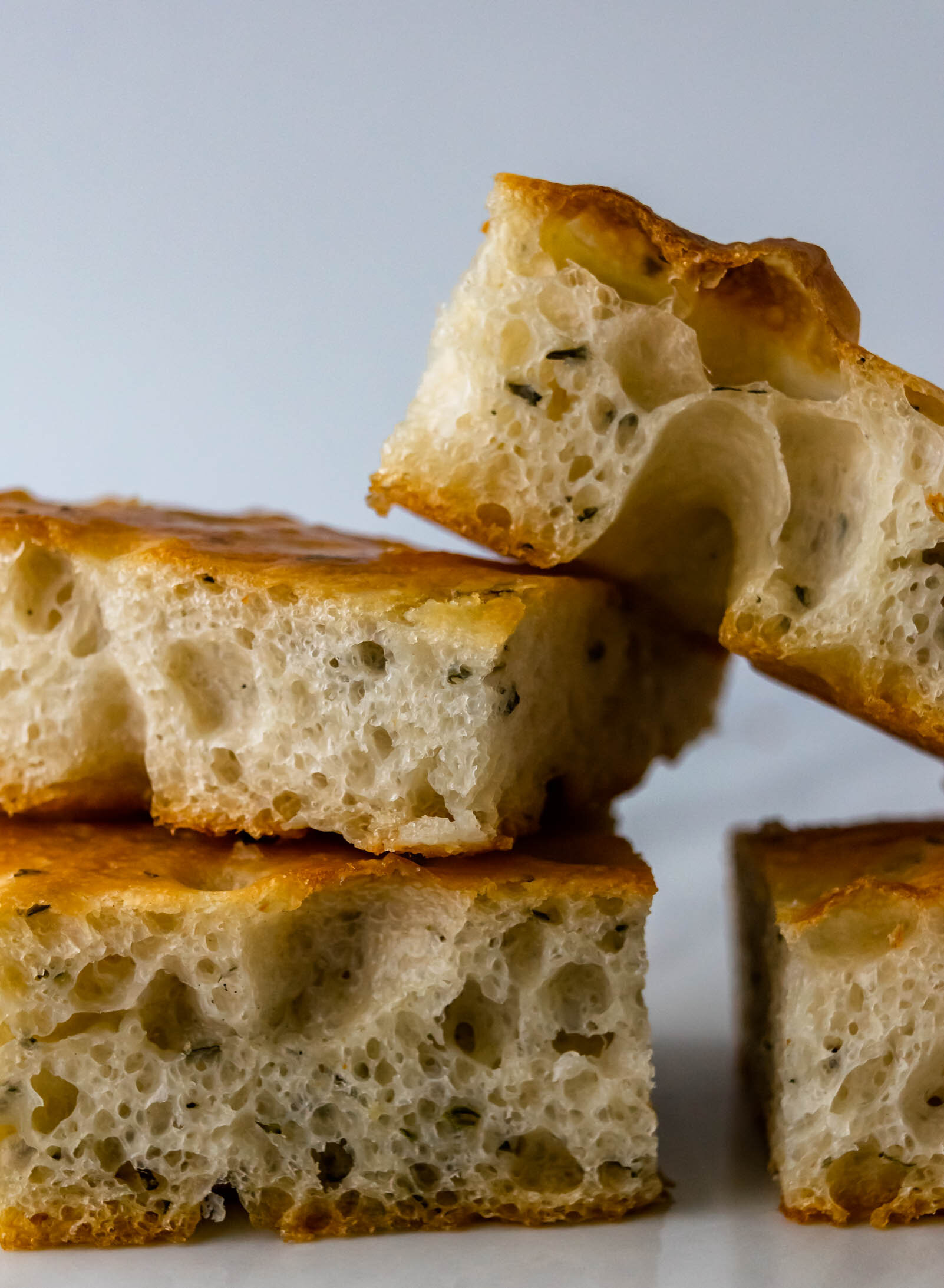
Samin Nosrat's Ligurian-Style Focaccia
Ingredients
- 600g (2 1/2 cups) water
- 1/2 tsp active dry yeast
- 15g (2 1/2 tsp) honey
- 800g (5 1/3 cups) all purpose flour
- 18g (2 tbsp) kosher salt
- 50g (1/4 cup) extra virgin olive oil, plus more for pan and drizzling
- 2-3 tbsp chopped fresh herbs (I used a blend of rosemary, oregano, and thyme)
- 1/3 cup warm water
- 1 1/2 tsp kosher salt
Instructions
- In a large bowl, stir together water, yeast, olive oil, and honey. Let rest for 5 minutes. Add flour, salt, and herbs and stir with a rubber spatula or wooden spoon until completely combined and no flour streaks remain. Cover bowl with plastic wrap and let rest on your countertop for 12-14 hours, until doubled in volume. (I like to mix this together before bed and let it rest overnight.)
- Spread 2-3 tablespoons of olive oil over the surface of a rimmed 12x18” baking sheet. Turn dough out onto the baking sheet and gently stretch the dough towards to the edges of the pan. To do this without tearing the dough, I like to reach my hands underneath and gently pulling it towards the outside. At this point, it will probably shrink back a bit, but that’s okay. Drizzle the whole thing with olive oil and cover with plastic wrap. Let it rest for 30 minutes.
- After 30 minutes, use your fingers to dimple the entire surface of the dough. Stir together warm water and salt and then pour brine over the top of the dimpled dough. Cover again and proof for another 45 minutes.
- About 30 minutes into your final proof, preheat your oven to 450° F. When the oven is hot and the dough is proofed, remove cover, sprinkle with flaky salt. Bake for 25-30 minutes until golden brown. Make sure to check that the bottom of the dough is crisp and browned.
- Remove focaccia from oven and immediately drizzle with more olive oil. Let rest for about 5 minutes and then use a metal spatula to loosen from pan. Enjoy warm with butter or olive oil and more flaky salt.
Notes:
- Adding a sourdough starter to any bread recipe is really fairly easy! Your sourdough culture is essentially a mixture of equal parts flour and water, so to add some to a recipe that doesn’t call for a culture, first decide how much starter you want to use. I usually start with 50 grams on my first experiment with a new recipe and then increase or decrease based on how the final product turns out. Then, you simply decrease your flour and water amounts to reflect the extra flour and water that you are adding to the dough. If you add 50 grams of starter, that breaks down to 25 grams of flour and 25 grams of water, so you will subtract 25 grams from each of the flour and water amounts that recipe calls for.
- For this recipe, I added 50 grams of mature starter to my water, yeast, olive oil, and honey mixture and decreased the water to 575g and flour to 775g.



